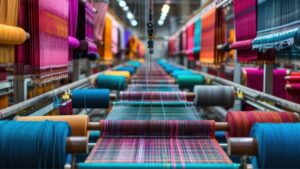
With apparel manufacturers all over the globe eyeing new and emerging markets to penetrate into, Australia lately has become one of the topmost preferences for almost all kinds of brands, showing a steady growth chart that cannot remain unnoticed. With a relatively high-growth and low-inflation, the economy supported by robust political and economic institutions, and an internationally competitive business sector, Australia now ranks as the 13th largest economy in the world (measured by GDP), and the 3rd largest in the Asia-Pacific region, giving a taste of its vibrant markets which sell everything from fresh produce to handcrafted gifts and high fashion. In apparel, while value is the key consideration, according to reports the rapidly increasing online retail is keeping the Australian market strong…
While some markets have been recording a downward growth, as per industry analysts, in contrast, retail sales in Australia grew by 1.1% in February 2013, after posting a gain of 4.3% in January 2013, with retail product groups like clothing, footwear and personal accessory growing at the fastest pace of 2.6% in February 2013. This slow but significant growth has made the future of the markets even more stronger as General Manager Karen Dobie of the research firm IbisWorld said, “The Australian fashion sector has been struggling over the past few years with revenue declines of 2.2% per annum, but the next five years is looking brighter, with growth of 1.1% per annum anticipated over the five years through 2017-18.”
As compared to the western markets, the Australian apparel market is relatively small, competitive and well-serviced by domestic companies like Oroton and Sass & Bide, LIFE with BIRD, Sydney’s The Corner Store and Bloodorange, Vanishing Elephant, Love, Watson X Watson, West 14th, Australian Fashion Labels, Bassike, and Jac + Jack which meets the expectations of Australia’s casual lifestyle and love for laid-back fashion with modern aesthetics and urban charm. But with a new changing trend off late, reports also show that consumers are happily adapting to the pricing model and European styles of international brands, which are driven by mid-range value and fast fashion turnarounds. The favouritism for luxurious fabrics and timeless aesthetics, styles up the Australian population which is mostly young and sporty (it is reported that six and a half-a-million people in Australia are registered sport participants). Australians have a great liking for art, literature, and performing arts, which further explains the increasing likability of the European fashion in Australia.
The apparel sector of the Australian fashion industry is a mixed bag of a few large and many small establishments. The larger establishments tend to concentrate on low-end fashion, long run production items, while the smaller establishments tend to be geared to respond to changes in the market. Given the seasonality differences between the northern and southern hemispheres, many of Australia’s designers base their fashion using the natural fibres that originate in Australia, being primarily wool and cotton. Other natural fibres gaining success on the world stage originating from Australia include Cashmere, Mohair, and Alpaca fibres. The main cities of Australia like Melbourne, Sydney, and Brisbane experience extreme summer temperatures and thus, people prefer light fabrics and colours for their garments.
With more than 80% of Australians living within 50 kilometres of the coast, the beach has become an integral part of the famous Australian laid-back lifestyle thus giving way to sporting a lot of beachwear and comfort garments. Beachwear is very popular and people prefer smart yet fashionable beachwears. Straight cuts and patterns are popular more than the laces and frills. The style is mostly laid-back with modern aesthetics and urban charm. Of late, Australian street fashion has seen lot of bold metallic hardware, bright colours and eye-catching prints.
Driven by the entry of international retailers such as Zara and Topshop, the mid-market demand is increasing, with number of International fashion retailers like H&M, Forever 21, J Crew and Abercrombie & Fitch set to enter the market and make the most of perceived opportunities in Australia, due to Australia’s relative insulation from the impact of the global financial crisis. During 2012, Zara’s sales grew by an estimated 17% and, like elsewhere in the retail sector; its online sales were a boon, accounting for 7% of Zara’s recent growth coming from Australia itself.
No doubt, boosting the growth of the apparel industry is the online retail in the continent, which experienced a significant growth in 2012 due to increased confidence in and familiarity with the internet and online payment systems. Other factors that aided the growth of online shopping include the development of the new retail platforms and on-the-go mobile capabilities, the availability of free shipping and enhanced user interface to assist the search and order processes.
A considerable shift from the traditional brick and mortar stores, online retail in Australia is growing at nearly 30% a year, 10 times faster than offline retail at less than 3%. Also, supported by a Australian Centre for Retail Studies (ACRS) report called Multichannel and Social Media, Australian consumers are changing their buying behaviour and are increasingly adopting multichannel as their favoured way of engaging with brands and products, along with a survey that shows that 58% of Australians are now using multichannel to buy their products, a growth from the 49% registered in 2012, with 48% of Australians buying products online at least once a month and with 7% buying online once every week. According to another report from CBRE, American retailers now view Australia as one of their top 10 international target markets.






